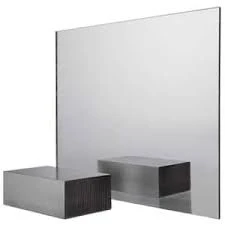

Understanding the Price Factors of Black Tinted Glass
Black tinted glass has become an increasingly popular choice for various applications, ranging from architectural designs to automotive purposes. The demand for this sleek, stylish glass has led to a diverse market that offers varying prices based on multiple factors. Understanding what influences these costs can help consumers make informed decisions whether they are looking to improve their homes, enhance their vehicles, or ensure privacy in their spaces.
1. Type of Glass
One of the primary factors affecting the price of black tinted glass is the type of glass being used. There are various forms of glass available, including float glass, tempered glass, and laminated glass. Each of these types has distinct characteristics and uses. For instance, tempered glass is often more expensive due to its enhanced durability and resistance to impact, making it a preferred choice for safety applications. As such, the type of glass chosen directly correlates with the price.
2. Tinting Process
The method used to apply the tint can also significantly influence the cost. There are several techniques for tinting glass, such as dye-based, ceramic-based, and film application. Dye-based tints are usually more affordable but may fade over time. Ceramic tints, while more expensive, are known for their durability and ability to block infrared rays, providing better heat rejection without compromising visibility. Therefore, consumers should consider how long they intend to keep the tinted glass and the conditions it will be exposed to when selecting a tinting method.

The size of the glass panels plays a crucial role in determining the price. Larger panels naturally require more material, leading to higher costs. Customizations, such as specific dimensions or unique shapes, can further increase expenses. Additionally, variations in thickness can affect pricing, as thicker glass offers greater insulation and safety features. Understanding the specific requirements for size and customization can help consumers navigate the market more effectively.
4. Installation Costs
Another significant factor to consider when looking at black tinted glass prices is the installation. Some applications may require professional installation, especially for larger panels or complex structures. Installation services can vary widely in cost based on the region, the complexity of the work, and the expertise of the professionals involved. It's crucial for consumers to factor in these potential costs when determining their budget for tinted glass.
5. Supplier and Brand Differences
Finally, the supplier or brand from which the tinted glass is purchased can lead to price variations. Established brands with a reputation for quality may charge a premium for their products. However, opting for lesser-known suppliers can sometimes yield lower prices, though this may come with risks related to quality and warranty.
In conclusion, the price of black tinted glass is influenced by multiple factors, including the type of glass, tinting process, size, installation costs, and the brand of the product. By understanding these elements, consumers can better navigate their options and make choices that best suit their needs and budgets. Whether for aesthetic appeal, heat rejection, or privacy, investing in quality black tinted glass can enhance both functionality and ambiance in any space.